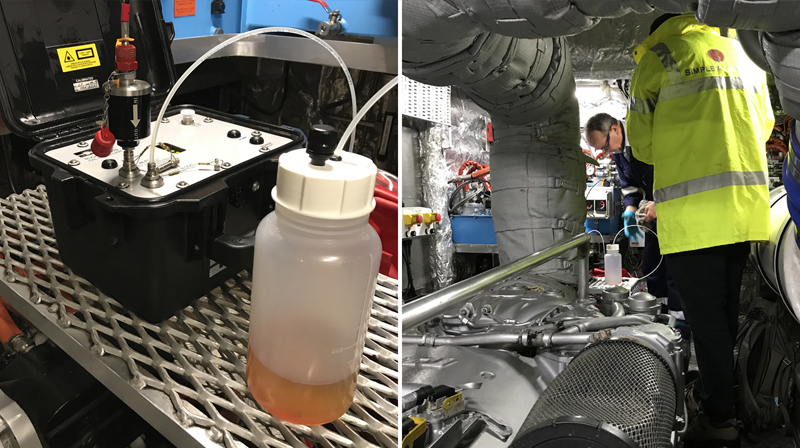
Simplex-Turbulo demonstrates particle detection equipment to help keep hydraulic system water content in spec
10/02/21

Since IMPA 2019, Simplex-Turbulo has been putting a plan together with Parker’s Steve Dickens, for a demonstration of Parker’s Particle Detection equipment.
Adrian Patterson, Director at Simplex-Turbulo explains:
It was at IMPA 2019 that we had a fruitful discussion with the technical team at Red Funnel Ferries, based in Southampton. Higher priority issues at Red Funnel and then Covid delayed things considerably, but Ben Southwick, myself and Steve recently boarded two Red Funnel Ferries with their respective Superintendents, Chris Hoadley (Raptor Superintendent) and Tom Ward (Hi-Speed Superintendent). The objective of the day was to demonstrate the iCount OS (IOS) Particle Detector and to understand whether this was a product that Red Funnel would use daily or weekly, or whether it was their preference to purchase an oil survey service on a less frequent basis.
We joined Tom in the very tight engine room on one of his three Hi-Speed passenger ferries, Red Jet 7. These smaller vessels do not have many hydraulic systems, but the water jet “bucket” is hydraulically controlled. Results of hydraulic oil cleanliness to ISO 4406 were provided to Tom, which would have to be verified against the hydraulic system manufacturers cleanliness specification before being judged as in or out of spec.
We then moved to the Red Kestrel, one of the larger Raptor ferries used for vehicle transport, which are technically managed by Chris. On this vessel, it was very difficult to find a test point because the crew had blanked them off over the many years this vessel had been in service, mainly because they used to leak. That immediately sparked our interest and, sure enough, when one of the hydraulic passenger door systems was checked, the reading from the IOS indicated that the oil had a very high water content. A large amount of water mixed with hydraulic oil increases the acid content of the oil, which accelerates the erosion of all elastomer seals which are in contact with the oil, hence the leaking test points. On further discussion, Chris reported that the doors did “stick” sometimes and wouldn’t open, but that it was not regarded as safety critical because there are several other routes for passengers to take. Nevertheless, this data and this equipment would allow the technical team to plan the maintenance of the hydraulic systems better so that those types of disruptions were not experienced by passengers at all.
Share
